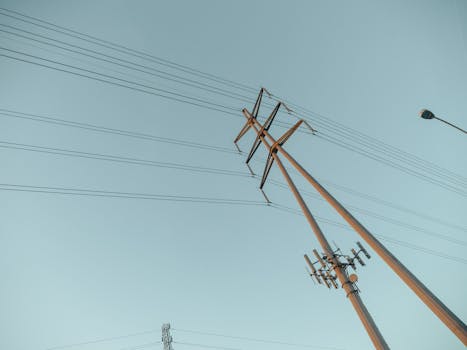“Empower Your Off-Grid Cabin: Essential Solar Wiring Insights for Sustainable Living.”
Solar wiring for off-grid cabins is essential for harnessing solar energy effectively and ensuring a reliable power supply. Understanding the components involved, such as solar panels, charge controllers, batteries, and inverters, is crucial for setting up a functional system. Proper wiring techniques and safety measures are vital to prevent electrical hazards and optimize energy efficiency. This guide will cover the key aspects of solar wiring, including system design, component selection, installation tips, and maintenance practices, enabling cabin owners to create a sustainable and self-sufficient energy solution.
Essential Components of Solar Wiring Systems
When considering solar wiring for off-grid cabins, understanding the essential components of solar wiring systems is crucial for ensuring a reliable and efficient energy supply. At the heart of any solar power system are solar panels, which capture sunlight and convert it into electricity. These panels are typically mounted on the roof or in an open area where they can receive maximum sunlight exposure. The electricity generated by the solar panels is direct current (DC), which is where the wiring system begins to play a pivotal role.
To connect the solar panels to the rest of the system, you will need appropriate wiring. The gauge of the wire is important; it must be thick enough to handle the current without overheating, yet not so thick that it becomes cumbersome to work with. Generally, a 10 to 12-gauge wire is suitable for most off-grid applications, but this can vary based on the distance between the panels and the charge controller. As the distance increases, voltage drop becomes a concern, necessitating thicker wires to maintain efficiency.
Once the electricity is generated, it must be directed to a charge controller. This device regulates the voltage and current coming from the solar panels to ensure that the batteries are charged properly without being overcharged. A good charge controller is essential for prolonging the life of your batteries, as it prevents damage from excessive charging. There are two main types of charge controllers: pulse width modulation (PWM) and maximum power point tracking (MPPT). While PWM controllers are generally less expensive, MPPT controllers are more efficient, especially in situations where the solar panels produce more voltage than the battery bank can handle.
After the charge controller, the next component in the solar wiring system is the battery bank. Batteries store the energy generated by the solar panels for use when sunlight is not available, such as during the night or on cloudy days. When selecting batteries, it is important to consider their capacity, which is measured in amp-hours (Ah). The size of the battery bank will depend on your energy needs and how long you want to be able to run your cabin without sunlight. Additionally, the type of batteries—lead-acid, lithium-ion, or others—will influence both performance and cost.
From the battery bank, the electricity is then routed to an inverter, which converts the DC electricity stored in the batteries into alternating current (AC) electricity, suitable for powering most household appliances. When choosing an inverter, it is essential to consider the total wattage of the devices you plan to use. Inverters come in various sizes, and selecting one that can handle your peak load is critical to avoid overloading the system.
Finally, the wiring system must include appropriate fuses and circuit breakers to protect against overloads and short circuits. These safety devices are essential for preventing damage to your equipment and ensuring the safety of your cabin. Proper grounding of the system is also necessary to protect against electrical faults and lightning strikes.
In summary, a well-designed solar wiring system for off-grid cabins consists of solar panels, appropriate wiring, a charge controller, a battery bank, an inverter, and safety devices. Each component plays a vital role in creating a reliable and efficient energy system that can meet your off-grid energy needs. By understanding these essential components, you can make informed decisions that will enhance the performance and longevity of your solar power system.
Safety Tips for Wiring Solar Panels
When it comes to wiring solar panels for off-grid cabins, safety should always be a top priority. Proper installation and maintenance of solar wiring not only ensure the efficiency of your system but also protect you and your property from potential hazards. To begin with, it is essential to familiarize yourself with the basic components of a solar power system, which typically includes solar panels, charge controllers, batteries, and inverters. Understanding how these components interact will help you make informed decisions during the installation process.
One of the first safety tips to consider is the importance of using the right gauge of wire. The wire gauge must be appropriate for the current that will flow through it; using a wire that is too thin can lead to overheating and potential fire hazards. To determine the correct wire size, you can refer to the National Electrical Code (NEC) guidelines, which provide specifications based on the amperage and distance of the run. Additionally, using high-quality, UV-resistant wire is crucial, especially for outdoor installations, as it will withstand the elements and reduce the risk of deterioration over time.
Moreover, it is vital to ensure that all connections are secure and properly insulated. Loose connections can create resistance, leading to overheating and energy loss. To mitigate this risk, use appropriate connectors and terminals, and consider employing heat shrink tubing or electrical tape to insulate exposed connections. Furthermore, regularly inspecting these connections as part of your maintenance routine can help identify any issues before they escalate into serious problems.
In addition to securing connections, grounding your solar system is another critical safety measure. Grounding helps protect your system from electrical surges and lightning strikes, which can cause significant damage. To ground your solar panels, you should connect them to a grounding rod that is driven into the earth. This connection should be made using a copper wire that meets the NEC requirements. By grounding your system, you not only protect your equipment but also enhance the safety of anyone who may come into contact with it.
Another important aspect of safety in solar wiring is the use of circuit breakers or fuses. These devices act as protective measures that can interrupt the flow of electricity in the event of a short circuit or overload. Installing circuit breakers in both the DC and AC sides of your system is advisable, as it provides an additional layer of protection. When selecting circuit breakers, ensure they are rated for the specific voltage and current of your system to ensure optimal performance.
As you work on your solar wiring, it is also essential to adhere to local codes and regulations. Each region may have specific requirements for solar installations, and failing to comply can lead to safety hazards and legal issues. Therefore, consulting with a licensed electrician or a solar installation professional can provide valuable insights and ensure that your system meets all necessary standards.
Finally, always prioritize personal safety while working on your solar wiring. Wearing appropriate personal protective equipment, such as gloves and safety glasses, can help prevent injuries. Additionally, if you are unsure about any aspect of the installation process, do not hesitate to seek professional assistance. By following these safety tips, you can create a reliable and efficient solar power system for your off-grid cabin, allowing you to enjoy the benefits of renewable energy with peace of mind.
Common Mistakes in Off-Grid Solar Wiring
When embarking on the journey of setting up solar wiring for off-grid cabins, it is crucial to be aware of common mistakes that can hinder efficiency and safety. One of the most prevalent errors is underestimating the power requirements of the cabin. Many individuals fail to accurately calculate their energy needs, leading to an inadequate solar system that cannot support their lifestyle. To avoid this pitfall, it is essential to conduct a thorough energy audit, taking into account all appliances, lighting, and devices that will be used. This assessment will help determine the appropriate size of the solar panels, batteries, and inverter needed to ensure a reliable power supply.
Another frequent mistake involves improper wire sizing. Using wires that are too small for the current they will carry can lead to overheating and potential fire hazards. It is vital to understand the relationship between wire gauge, current, and distance. As a general rule, the longer the distance between the solar panels and the battery bank, the larger the wire gauge should be to minimize voltage drop. By selecting the correct wire size, you can enhance the efficiency of your system and ensure safe operation.
In addition to wire sizing, neglecting to use proper connectors and junction boxes can also lead to significant issues. Many DIY enthusiasts may opt for low-quality connectors or skip junction boxes altogether, thinking they can save time and money. However, this can result in poor connections that may corrode over time, leading to power loss and potential system failure. Investing in high-quality connectors and ensuring that all junctions are properly sealed will enhance the longevity and reliability of the solar wiring system.
Moreover, failing to account for environmental factors can be detrimental to an off-grid solar setup. For instance, exposure to extreme temperatures, moisture, and UV radiation can degrade wiring and components over time. It is essential to choose materials that are rated for outdoor use and to install them in a manner that protects them from the elements. Additionally, regular maintenance checks should be scheduled to identify any wear and tear before it becomes a more significant issue.
Another common oversight is neglecting to include a charge controller in the system. A charge controller is crucial for regulating the voltage and current coming from the solar panels to the batteries. Without it, batteries can become overcharged or excessively discharged, leading to reduced lifespan and performance. Therefore, selecting the right type of charge controller—whether PWM or MPPT—based on the specific needs of the system is vital for optimal operation.
Lastly, many individuals overlook the importance of grounding their solar systems. Proper grounding is essential for safety, as it helps prevent electrical shocks and protects equipment from lightning strikes. Ensuring that all components are correctly grounded will not only enhance safety but also improve the overall performance of the solar system.
In conclusion, avoiding these common mistakes in off-grid solar wiring requires careful planning, attention to detail, and a commitment to quality. By accurately assessing power needs, selecting appropriate wire sizes, using high-quality connectors, considering environmental factors, incorporating a charge controller, and ensuring proper grounding, you can create a reliable and efficient solar power system for your off-grid cabin. Taking the time to educate yourself on these aspects will ultimately lead to a more successful and sustainable off-grid living experience.
Best Practices for Maintaining Solar Wiring in Cabins
Maintaining solar wiring in off-grid cabins is crucial for ensuring the longevity and efficiency of your solar power system. As more people seek sustainable living solutions, understanding the best practices for maintaining solar wiring becomes increasingly important. First and foremost, regular inspections are essential. By routinely checking the wiring, you can identify any signs of wear, corrosion, or damage that may compromise the system’s performance. It is advisable to conduct these inspections at least twice a year, ideally before and after the harshest weather seasons. During these inspections, pay close attention to connections, junction boxes, and any exposed wiring, as these areas are particularly susceptible to environmental factors.
In addition to regular inspections, keeping the wiring clean is another vital practice. Dust, dirt, and debris can accumulate on solar panels and wiring, which can hinder performance. A simple cleaning routine, using a soft brush or cloth, can help maintain optimal efficiency. However, it is important to ensure that the cleaning process does not damage the wiring or connections. When cleaning, always turn off the system to avoid any electrical hazards. Furthermore, consider the environment in which your cabin is located. If you are in a region prone to heavy snowfall or ice, it is wise to install protective coverings or conduits for your wiring. This can prevent physical damage and reduce the risk of electrical shorts caused by moisture.
Another best practice involves securing all wiring properly. Loose or improperly secured wiring can lead to wear and tear over time, increasing the risk of failure. Use appropriate fasteners and cable ties to keep wiring in place, ensuring that it is not exposed to unnecessary movement or stress. Additionally, when installing new wiring or making modifications, always use high-quality materials that are rated for outdoor use. This not only enhances durability but also minimizes the risk of electrical issues down the line. Moreover, it is essential to follow local codes and regulations when it comes to wiring installations. Compliance with these standards not only ensures safety but also helps in maintaining the integrity of your solar power system.
As you maintain your solar wiring, it is also beneficial to keep a detailed log of all inspections, maintenance activities, and any issues encountered. This documentation can serve as a valuable resource for troubleshooting and can help you track the performance of your system over time. In addition, if you ever decide to sell your cabin, having a comprehensive maintenance record can enhance its value and appeal to potential buyers.
Lastly, consider investing in monitoring systems that can provide real-time data on your solar power system’s performance. These systems can alert you to any irregularities or drops in efficiency, allowing you to address issues before they escalate. By integrating technology into your maintenance routine, you can ensure that your solar wiring remains in optimal condition.
In conclusion, maintaining solar wiring in off-grid cabins requires a proactive approach that includes regular inspections, cleaning, securing wiring, adhering to local codes, and keeping detailed records. By following these best practices, you can enhance the reliability and efficiency of your solar power system, ensuring that your off-grid cabin remains a sustainable and comfortable retreat for years to come.
Q&A
1. **What components are essential for solar wiring in off-grid cabins?**
Essential components include solar panels, charge controllers, batteries, inverters, and wiring (cables and connectors).
2. **How do you determine the correct wire size for solar installations?**
Wire size is determined by the current (amps) and the distance between components; use the American Wire Gauge (AWG) chart to select appropriate wire size to minimize voltage drop.
3. **What is the purpose of a charge controller in a solar system?**
A charge controller regulates the voltage and current coming from the solar panels to the batteries, preventing overcharging and extending battery life.
4. **How should solar panels be wired for an off-grid system?**
Solar panels can be wired in series to increase voltage or in parallel to increase current, depending on the system requirements and the specifications of the charge controller and inverter.
Conclusion
When wiring a solar system for off-grid cabins, it is essential to understand the components involved, including solar panels, charge controllers, batteries, and inverters. Proper sizing of the system based on energy needs, selecting appropriate wire gauges to handle current loads, and ensuring safe installation practices are crucial. Additionally, understanding local regulations and safety standards will help ensure compliance and safety. Overall, thorough planning and knowledge of solar wiring principles are vital for creating an efficient and reliable off-grid power system.




